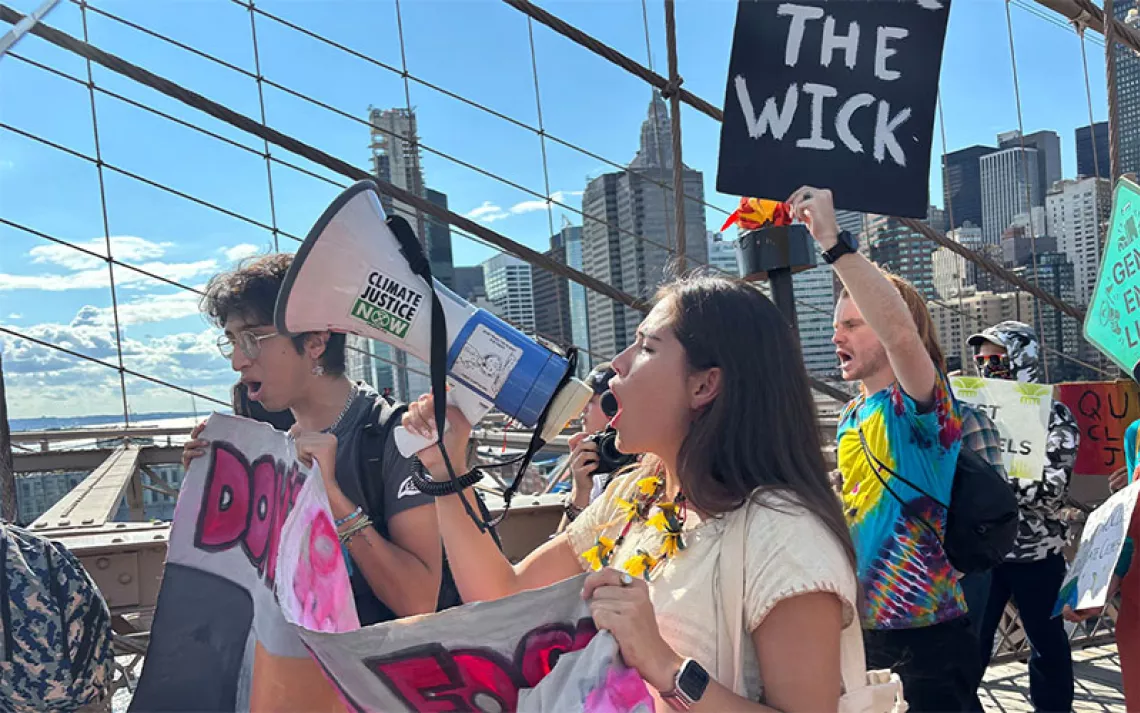Making a Stink
Two sisters use social media to draw attention to wastewater lagoons across the street from their house

Sisters Abril and Ariss Cosino fight environmental racism in South Tower Estates, Texas. | Photo by Palacios Photography
For as long as Abril and Ariss Cosino could remember, the noxious odor had been part of life in South Tower Estates, an unincorporated community of 3,300 near the Texas-Mexico border. Residents complained about it and told their children not to play outside on days when it was particularly bad. But the sisters didn't know what was causing the rotten-egg smell until they participated in a summer leadership program organized by the nonprofit A Resource in Serving Equality. That's when they learned about the antiquated wastewater lagoons across the street from their house, hidden by an embankment and a barbed wire fence.
"The sewage doesn't even come from our neighborhood," Ariss explains. It's sent there by the adjacent city of Alamo. "As Hispanic, low-income people, we have to deal with their stuff. When we found that out, we wanted to do something."
In August 2015, Ariss, Abril, and 15 other high school students started a social media campaign using the hashtags #southtowerpower and #stopthesmell. The group posted research about the health hazards of prolonged exposure to environmental odors—including nausea, headaches, heart palpitations, shortness of breath, and depression—and shared their reflections on growing up with the smell. They also presented their concerns to city and county commissions.
Last fall, the students met with an official from the Texas Commission on Environmental Quality, who explained the process for submitting a formal odor-nuisance complaint. Soon, Abril and Ariss were spending Saturdays going door-to-door, distributing odor logs and urging neighbors to call a hotline when the smell was especially severe. "At first, everyone was like, 'You're how old? Are you sure?'" Abril says. Eventually, residents lodged enough complaints to prompt an official TCEQ investigation.
In December, the TCEQ concluded that the smell violated state standards and threatened to fine the city of Alamo. In response, Alamo installed new pumps and aerators and began working to update the sewage-treatment plant. "I didn't know what environmental racism was," Ariss says. "But after I began learning about it, I could tie things together, like in Flint, Michigan. It goes on everywhere.
This article appeared in the September/October 2016 edition with the headline "Smells Like Teen Spirit."
On the Edge
About 55 percent of South Tower residents live below the poverty level, compared with 30 percent in Alamo and 18 percent in Texas overall; 99 percent of the town's residents are Latino.
 The Magazine of The Sierra Club
The Magazine of The Sierra Club



